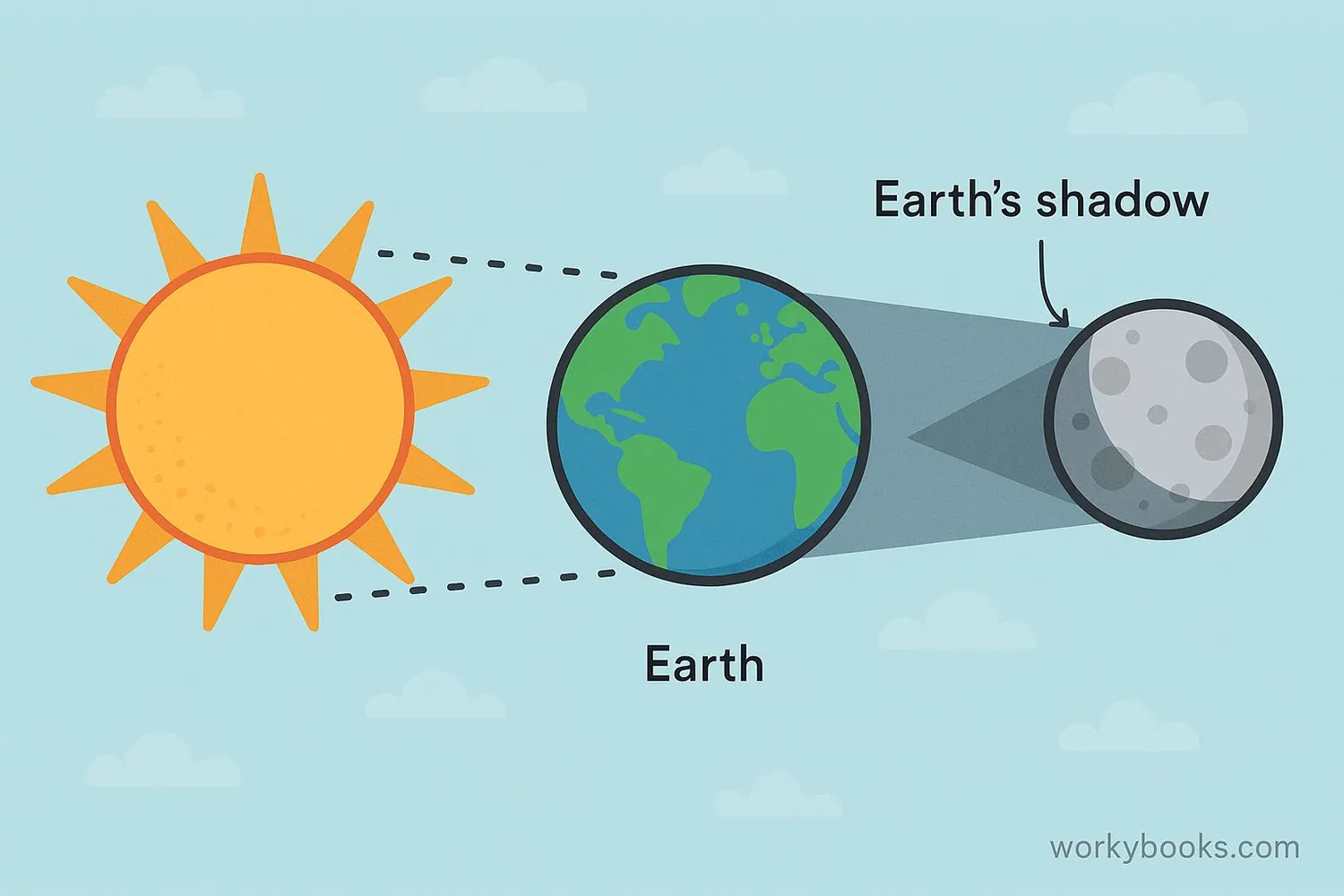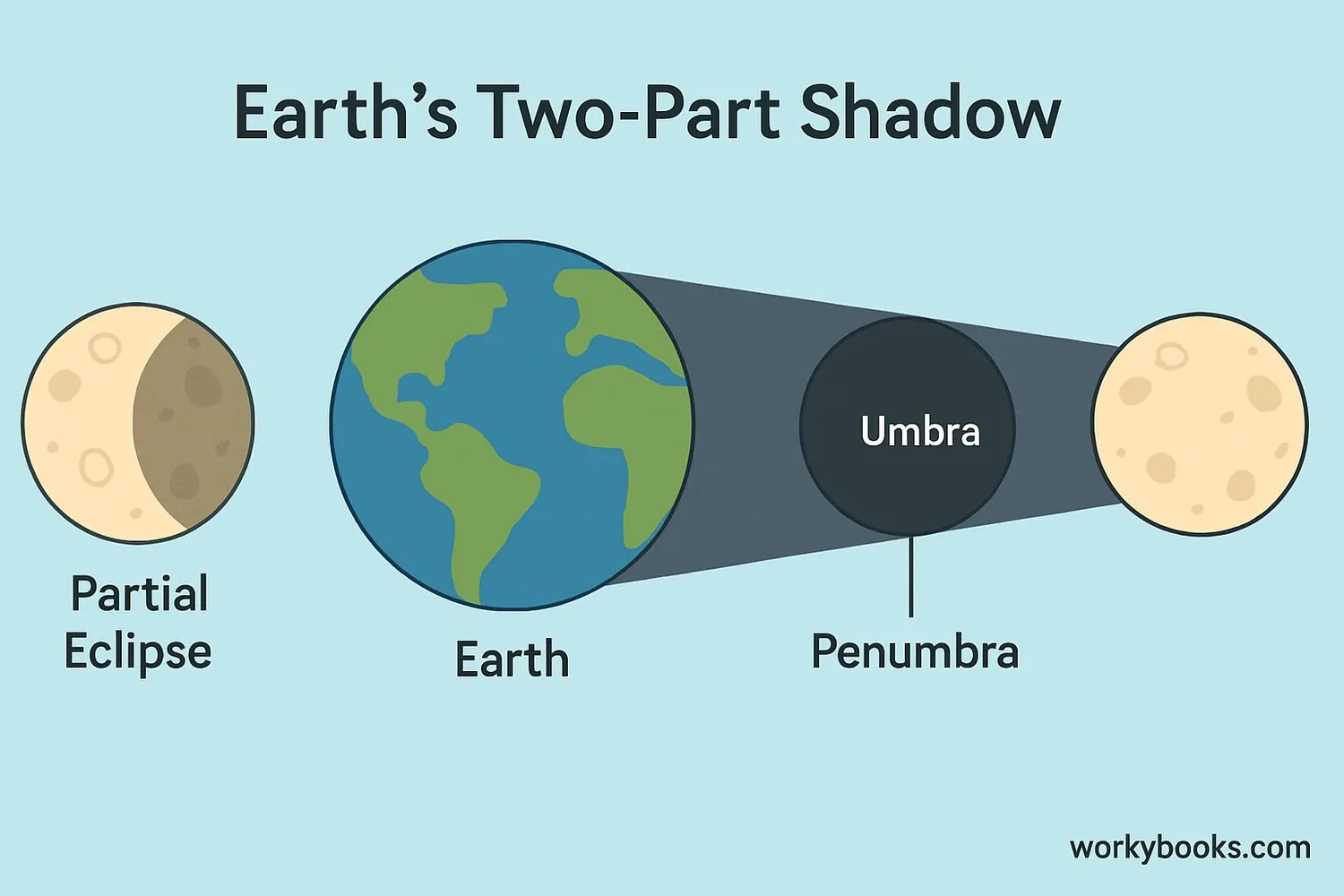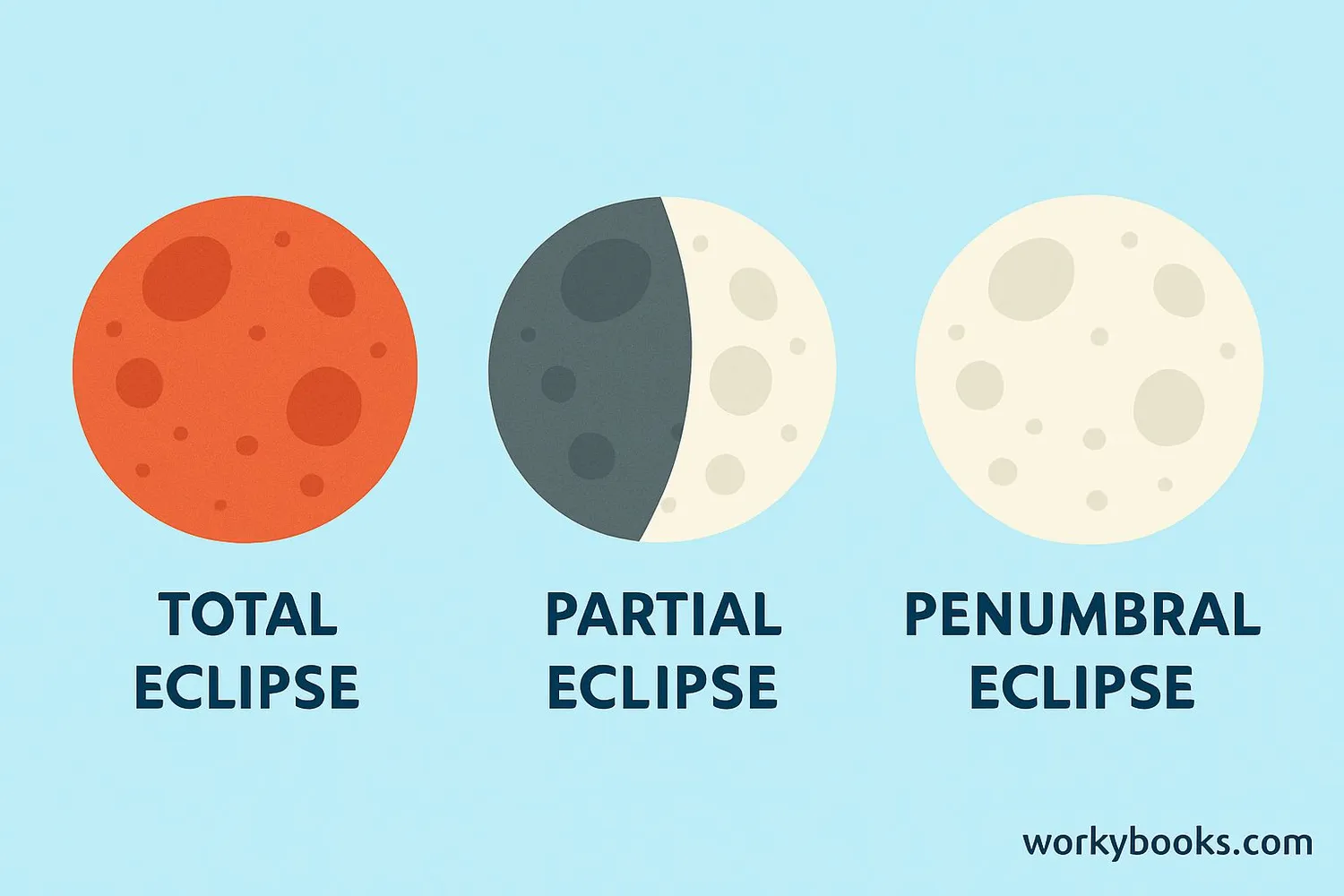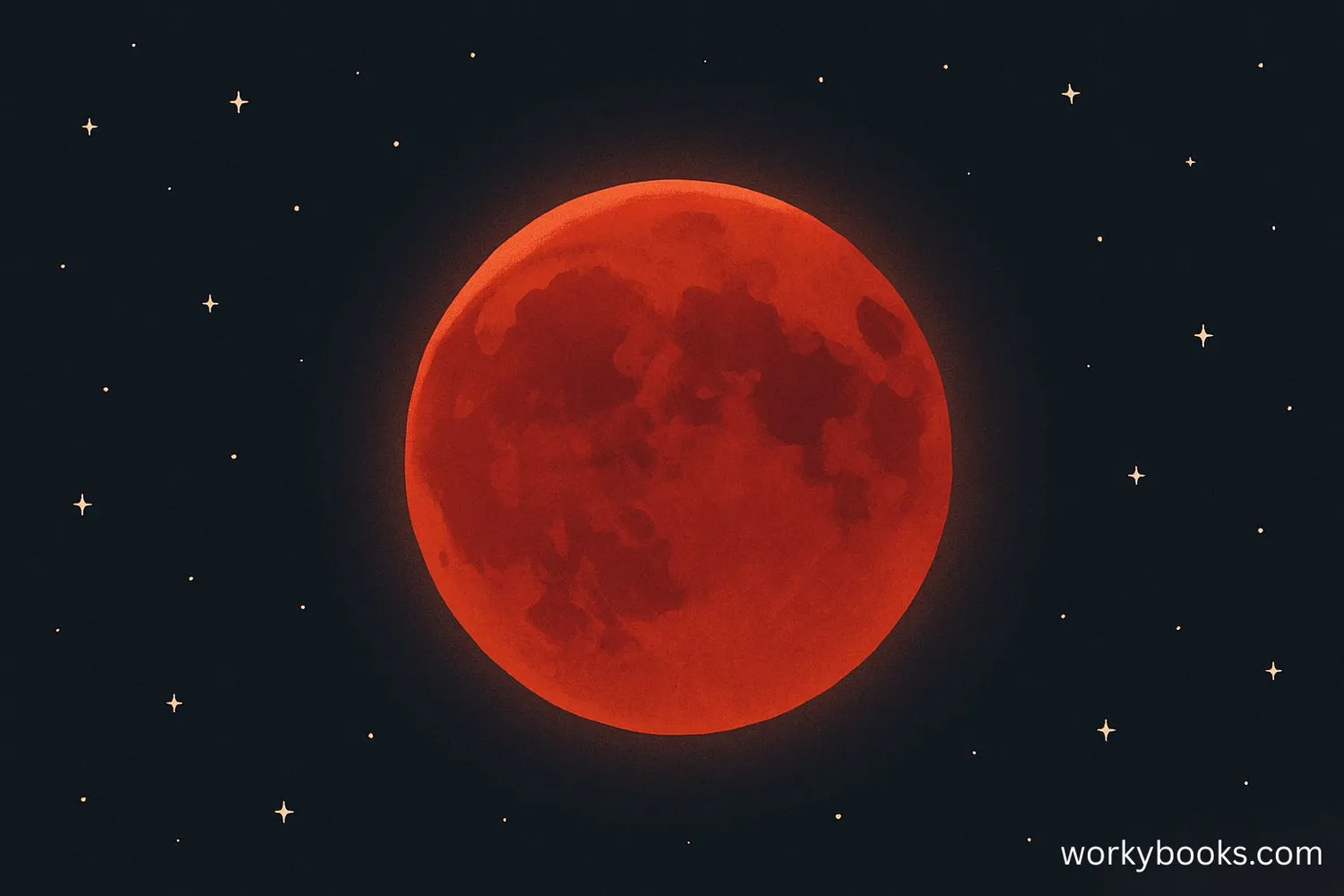Lunar Eclipse - Definition, Examples, Quiz, FAQ, Trivia
Discover how Earth's shadow creates amazing celestial events in our night sky
What is a Lunar Eclipse?

A lunar eclipse is a special celestial event that happens when Earth moves directly between the Sun and the Moon. This causes Earth's shadow to fall on the Moon, making the Moon appear darker or sometimes turn a reddish color.
Unlike a solar eclipse where the Moon blocks the Sun, during a lunar eclipse, it's Earth that blocks sunlight from reaching the Moon. This amazing event can only happen during a full moon, when the Sun and Moon are on opposite sides of Earth.
Moon Fact!
Lunar eclipses can be seen from anywhere on Earth's night side, and they can last for several hours!
How a Lunar Eclipse Works

Earth casts two different shadows into space: the umbra and the penumbra. The umbra is the dark, central part where Earth blocks all direct sunlight. The penumbra is the outer part where Earth only blocks some sunlight.
During a lunar eclipse, the Moon passes through these shadows. The type of eclipse we see depends on which part of Earth's shadow the Moon moves through.
Alignment
Sun, Earth, and Moon line up perfectly
Earth's Shadow
Earth casts its shadow into space
Moon Enters
Moon moves into Earth's shadow
Eclipse
Moon darkens or turns red
Moon Exits
Moon moves out of Earth's shadow
Orbit Fact!
The Moon's orbit is tilted about 5 degrees compared to Earth's orbit around the Sun, which is why we don't have eclipses every month.
Types of Lunar Eclipses

There are three different types of lunar eclipses:
Total Lunar Eclipse
The Moon passes completely into Earth's umbra (darkest shadow). The Moon often turns reddish during totality.
Partial Lunar Eclipse
Only part of the Moon enters Earth's umbra, creating a dark shadow on part of the Moon's surface.
Penumbral Lunar Eclipse
The Moon passes only through Earth's penumbra (lighter shadow), causing a subtle darkening that's hard to notice.
Total lunar eclipses are the most dramatic and often called "blood moons" because of their reddish color. Partial eclipses show a dark "bite" taken out of the Moon. Penumbral eclipses are subtle and sometimes difficult to see without special equipment.
The Blood Moon Phenomenon

During a total lunar eclipse, the Moon doesn't completely disappear. Instead, it often turns a beautiful reddish-orange color, earning the nickname "blood moon." This happens because of Earth's atmosphere.
While Earth blocks direct sunlight from reaching the Moon, our atmosphere bends some sunlight around Earth's edges. This light passes through our atmosphere, which filters out most blue light (the same reason sunsets appear red) and allows mainly red light to reach the Moon.
Sunlight
Sunlight passes through Earth's atmosphere
Filtering
Atmosphere scatters blue light, lets red light through
Red Moon
Red light illuminates the Moon during totality
Color Fact!
The exact color of the Moon during a total eclipse can vary from dark brown to bright orange-red, depending on how much dust and clouds are in Earth's atmosphere.
Lunar Eclipse Quiz
Test your lunar eclipse knowledge with this quiz! Answer all 5 questions to see how much you've learned.
Frequently Asked Questions
Here are answers to some common questions about lunar eclipses:
Lunar Eclipse Trivia
Discover some amazing facts about lunar eclipses!
Historical Records
The earliest recorded lunar eclipse appears in ancient Chinese texts from over 4,000 years ago! Ancient astronomers used eclipses to study celestial motions.
Best Viewing
Unlike solar eclipses that are only visible from a small path on Earth, lunar eclipses can be seen from anywhere on the night side of Earth!
Rapid Cooling
During a total lunar eclipse, the Moon's surface temperature can drop dramatically—by hundreds of degrees in just 90 minutes—as direct sunlight is blocked.
Future Eclipses
Scientists can predict lunar eclipses with incredible accuracy for thousands of years into the future and past using mathematical models of celestial motions.


